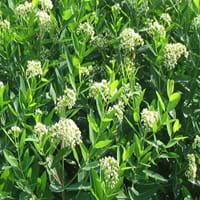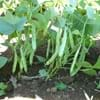Life Span
Perennial
Annual
Type
Vegetable
Flowering Plants, Herbs, Shrubs
Origin
Mexico, Central America, South America
Southern Asia, India
Types
Bigleaf hydrangea, Hortensia, Smooth hydrangea, Oakleaf hydrangea, Annabelle
Crotalaria benghalensis Lam.
Crotalaria fenestrata Sims
Crotalaria ferestrata Sims
Crotalaria porrecta Wall.
Crotalaria sericea Willd.
Crotalaria tenuifolia Roxb.
Crotalaria viminea Wall.
Habitat
Forest edges, Hillside, Woods
Mountain tops, Temperate Regions, Terrestrial
USDA Hardiness Zone
11-15
8-11
AHS Heat Zone
12*1
12 - 4
Sunset Zone
21,22
H1, H2, 3a, 3b, 4, 5, 6, 7, 8, 9, 10, 11, 12, 13, 14, 15, 16, 17, 18, 19, 20, 21, 22, 24
Habit
Prostrate/Trailing
Oval or Rounded
Flower Color
Yellow
Yellow, Gold
Flower Color Modifier
Bicolor
Bicolor
Leaf Color in Spring
Green, Dark Green
Light Green, Gray Green
Leaf Color in Summer
Green, Dark Green
Light Green, Gray Green
Leaf Color in Fall
Green, Dark Green
Light Green, Gray Green
Leaf Color in Winter
Green, Dark Green
Light Green
Leaf Shape
Oblovate
Ovate
Plant Season
Spring, Summer, Fall
Spring, Summer, Fall, Winter
Sunlight
Full Sun
Full Sun, Partial Sun
Growth Rate
Fast
Very Fast
Type of Soil
Loam, Sand
Clay, Loam, Sand
The pH of Soil
Neutral
Neutral
Soil Drainage
Well drained
Well drained
Bloom Time
Indeterminate
Indeterminate
Tolerances
Drought
Drought
Where to Plant?
Container, Ground
Ground, Pot
How to Plant?
Seedlings, Stem Planting
Seedlings
Plant Maintenance
Medium
Medium
Watering Requirements
Not Available
Does not require lot of watering, Requires watering in the growing season
In Summer
Average Water
Lots of watering
In Spring
Moderate
Moderate
In Winter
Average Water
Average Water
Soil Type
Loam, Sand
Clay, Loam, Sandy
Soil Drainage Capacity
Well drained
Well drained
Sun Exposure
Full Sun
Full Sun, Partial Sun
Pruning
Remove damaged leaves, Remove dead branches, Remove dead leaves
Cut or pinch the stems, Remove damaged leaves, Remove deadheads, Shape and thin as needed
Fertilizers
All-Purpose Liquid Fertilizer
All-Purpose Liquid Fertilizer
Pests and Diseases
Red blotch
Insects, Moth, Red blotch
Plant Tolerance
Drought
Drought
Flower Petal Number
Single
Single
Fragrant Bark/Stem
Yes
No
Foliage Texture
Medium
Fine
Foliage Sheen
Matte
Matte
Evergreen
Semi-Evergreen
No
Attracts
Butterflies
Not Available
Allergy
Chest tightness, Diarrhea, Dizziness, Nausea, Vomiting
no allergic reactions
Aesthetic Uses
Not Available
Not Used For Aesthetic Purpose
Beauty Benefits
Not Available
Not Available
Edible Uses
Not Available
Yes
Environmental Uses
Air purification
Air purification
Medicinal Uses
Fever, Kidney problems, Urinary tract problems
Antispasmodic, Cold, Cough, Diarrhea, Digestive disorders, Jaundice, Liver problems, Urinary tract problems, Wounds
Part of Plant Used
Flowers, Root
Fruits, Leaves
Other Uses
Not Available
Culinary use
Used As Indoor Plant
Not Available
No
Used As Outdoor Plant
Yes
Yes
Garden Design
Container, Edible, Hanging Basket, Herb / Vegetable
Edging
Botanical Name
LYCOPERSICON esculentum 'Siberian'
Apocynum cannabinum
Common Name
Siberian Tomato
Dogbane, milkweed, honeybloom, bitter root, black
hemp, hemp dogbane, lechuguilla, westernwall
In Hindi
Hydrangea
भारतीय गांजा
In German
Hortensie
Indischer Hanf
In French
Hortensia
chanvre indien
In Spanish
Hortensia
El cáñamo indio
In Greek
υδραγεία
ινδική κάνναβη
In Portuguese
Hortênsia
cânhamo indiano
In Polish
Hortensja
Konopie indyjskie
In Latin
Hibiscus
Latin Hemp
Phylum
Not Available
Not Available
Class
Not Available
Not Available
Order
Not Available
Fabales
Family
Solanaceae
Fabaceae
Genus
Not Available
Crotalaria
Clade
Not Available
Angiosperms, Eudicots, Rosids
Tribe
Not Available
Crotalarieae
Subfamily
Not Available
Faboideae
Number of Species
Not Available
Properties of Siberian Tomato and Indian Hemp
Wondering what are the properties of Siberian Tomato and Indian Hemp? We provide you with everything About Siberian Tomato and Indian Hemp. Siberian Tomato doesn't have thorns and Indian Hemp doesn't have thorns. Also Siberian Tomato does not have fragrant flowers. Siberian Tomato has allergic reactions like Chest tightness, Diarrhea, Dizziness, Nausea and Vomiting and Indian Hemp has allergic reactions like Chest tightness, Diarrhea, Dizziness, Nausea and Vomiting. Compare all the properties and characteristics of these two plants. Find out which of these plant can be used as indoor plant. If you are interested to decorate your house and garden, find out aesthetic uses, compare them and select the plant which will beautify your surrounding. Along with beautification, try comparing medicinal and edible uses of Siberian Tomato and Indian Hemp and you can choose the plant having best and most benefits.
Season and Care of Siberian Tomato and Indian Hemp
Season and care of Siberian Tomato and Indian Hemp is important to know. While considering everything about Siberian Tomato and Indian Hemp Care, growing season is an essential factor. Siberian Tomato season is Spring, Summer and Fall and Indian Hemp season is Spring, Summer and Fall. The type of soil for Siberian Tomato is Loam, Sand and for Indian Hemp is Clay, Loam, Sand while the PH of soil for Siberian Tomato is Neutral and for Indian Hemp is Neutral.
Siberian Tomato and Indian Hemp Physical Information
Siberian Tomato and Indian Hemp physical information is very important for comparison. Siberian Tomato height is 30.50 cm and width 60.00 cm whereas Indian Hemp height is 90.00 cm and width 90.00 cm. The color specification of Siberian Tomato and Indian Hemp are as follows:
Siberian Tomato flower color: Yellow
Siberian Tomato leaf color: Green and Dark Green
Indian Hemp flower color: Yellow and Gold
- Indian Hemp leaf color: Light Green and Gray Green
Care of Siberian Tomato and Indian Hemp
Care of Siberian Tomato and Indian Hemp include pruning, fertilizers, watering etc. Siberian Tomato pruning is done Remove damaged leaves, Remove dead branches and Remove dead leaves and Indian Hemp pruning is done Cut or pinch the stems, Remove damaged leaves, Remove deadheads and Shape and thin as needed. In summer Siberian Tomato needs Average Water and in winter, it needs Average Water. Whereas, in summer Indian Hemp needs Lots of watering and in winter, it needs Average Water.


